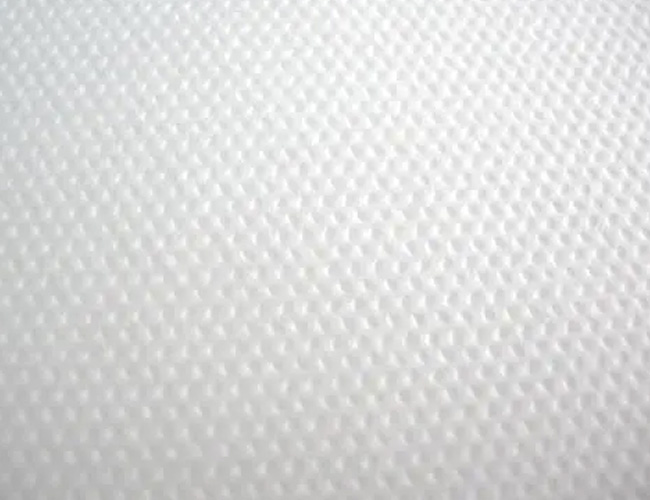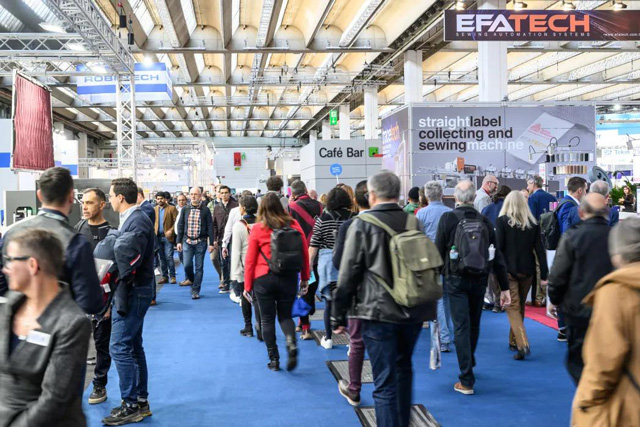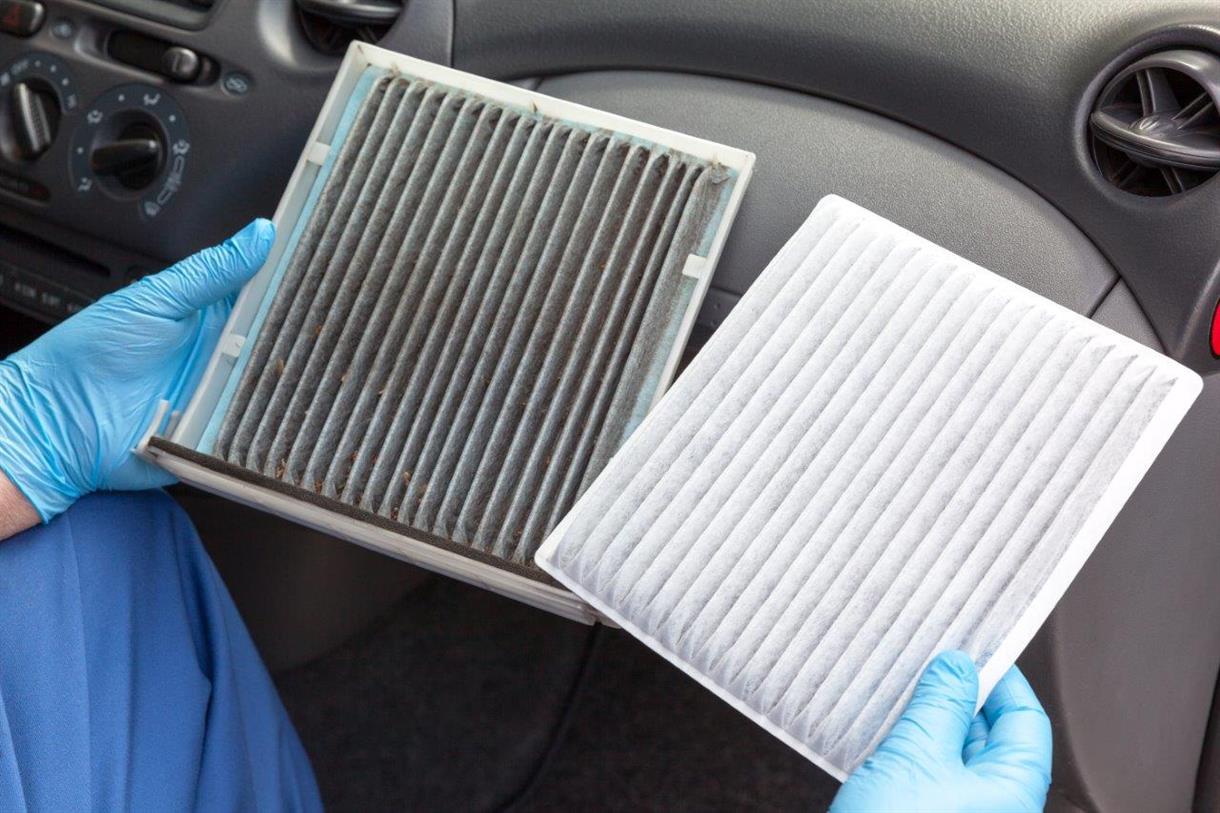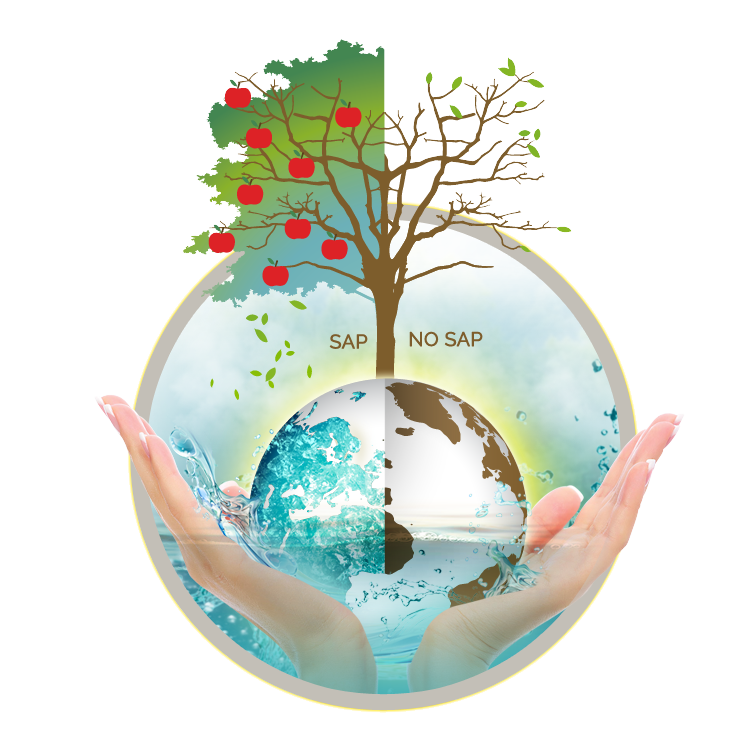
Hydrophilic nonwoven fabrics are made by adding "hydrophilic" chemicals to nonwoven fabrics.
Most of the nonwovens themselves are not hydrophilic or are outright water-repellent. To make the nonwoven fabric hydrophilic. The hydrophilic agents are added to the nonwoven fabric production process. or added to the fibers during the fiber production process, which is called hydrophilic nonwoven fabric.
Hydrophilic nonwovens are widely used in medical, hygiene, household, cosmetic, and industrial applications. For example, in the medical and hygiene fields, hydrophilic nonwovens are commonly used to make products such as medical dressings, sanitary napkins, diapers, and surgical gowns, which need good water absorption and permeability to ensure good comfort and protection.
First of all, we have to understand that nonwoven fabric is a kind of nonwoven fabric. Due to the special nature of its fiber structure and manufacturing process. It makes the nonwoven fabric more helpful than traditional fabric in some aspects, such as lighter, softer, more breathable, and easier to handle.
In the production of hydrophilic nonwovens, hydrophilic agents are usually added to the fiber blend of the textile material or through the next chemical treatment process.
This treatment allows the surface of the nonwoven to be more easily wetted with water and thus has good water absorption and liquid permeability properties.
1. Hydrophilic
Compared with ordinary nonwoven fabric, hydrophilic nonwoven fabric has good hydrophilic performance. I.E. hydrophilic rate, hydrophilic speed, hydrophilic validity, and hydrophilic times, which can quickly absorb moisture and keep the surface dry and not easy to slip off.
To progress the hydrophilicity of the nonwoven fabric, hydrophilicity is generally achieved by progressing the wetness of the appearance.
2. Air permeability
The breathability of the hydrophilic nonwoven fabric is good. It allows air to circulate freely and does not affect skin breathing.
3. Softness
The hydrophilic nonwoven fabric has finer fiber thickness and a softer texture. It is comfortable to the touch and not easy to stimulate the skin.
4. High strength
After a special process and can withstand certain weights and tension. The fibers of the hydrophilic nonwoven fabric have high strength and tensile properties.
5. Corrosion resistance
The hydrophilic nonwoven fabric has good chemical stability and good corrosion resistance.
6. Safety and hygiene
Hydrophilic nonwoven fabric is an environmentally friendly material. It does not contain toxic and harmful substances and is harmless to the human body. And it meets hygiene standards.
7. Isolation of bacteria
The surface of the hydrophilic nonwoven fabric has good antibacterial properties. It can effectively isolate and kill bacteria and keep the surface clean and hygienic.
Hydrophilic nonwovens are used in a wide range of applications. With important applications in medical, hygiene, daily necessities, and industrial fields. The main applications of hydrophilic nonwovens due to their good moisture absorption, breathability, and antibacterial properties include the following.
1. Medical and health care
Hydrophilic nonwoven fabrics can be used to make medical masks, medical bandages, surgical gowns, isolation gowns, sanitary napkins and other products for medical and health purposes.
2. Baby products
Hydrophilic nonwoven fabrics can be used to make diapers, diaper pads, wet wipes, baby washcloths, and other baby products.
3. Daily necessities
Hydrophilic nonwoven fabrics can be used to make daily necessities such as washcloths, facial cleansing pads, skin care towels, slippers, etc.
4. Cleaning products
Hydrophilic nonwoven fabrics can be used to make dish towels, wipes, window wipes, floor wipes, and other cleaning products. They can quickly absorb and remove dirt and liquid.
5. Industrial products
Hydrophilic nonwoven fabrics can be used to make filter materials, isolation materials, insulation materials, wiping cloths, protective clothing, and other industrial supplies.
6. Agricultural supplies
Hydrophilic nonwoven fabric can be used in the agricultural field, such as cover crop film, greenhouse covering materials, etc... It has good air permeability and light permeability and can maintain the appropriate temperature and humidity for crops.
It is an environmentally friendly textile fabric, with strong liquid adsorption, harmless to the human body, convenient, and practical. According to the different production processes. Hydrophilic nonwoven can be divided into 8 kinds.
1. Pulp airflow into a network of hydrophilic nonwoven fabric
Also known as dust-free paper, dry paper is a hydrophilic nonwoven fabric. It is the use of airflow into the network technology to open the wood pulp fiber board into a single fiber state. And then use the airflow method to make fiber agglomeration in the formation of a network curtain, fiber network, and then reinforced into cloth.
2. Wet hydrophilic nonwoven fabric
It is to loosen the fiber material in the water medium into a single fiber. At the same time make different fiber materials are mixed to make fiber suspension pulp. And the suspension pulp is transported to the web formation mechanism, and the fiber is formed into a web in the wet state and then reinforced into cloth.
3. Spunbond hydrophilic nonwoven fabric
After the polymer has been extruded and stretched to form a continuous filament, the filament is laid into a web, and the fiber web is then bonded by itself, thermally bonded, chemically bonded or mechanically reinforced to make the fiber web into a hydrophilic nonwoven.
4. Spunlace hydrophilic nonwoven
High-pressure micro-fine water is sprayed onto one or more layers of fiber webs to make the fibers entwine with each other. Finally, the fiber webs can be reinforced and have a certain strength.
5. Heat-bonded hydrophilic nonwoven fabric
It refers to adding fibrous or powdered hot melt bonding reinforcing material to the fiber web, which is then heated and melted, and cooled to reinforce the cloth.
6. Meltblown hydrophilic nonwoven fabric
The process: polymer feeding - melt extrusion - fiber formation - fiber cooling - into a network - reinforced into cloth.
7. Acupuncture hydrophilic nonwoven fabric
Needle-punched hydrophilic nonwoven is a kind of dry hydrophilic nonwoven fabric. The needle-punched hydrophilic nonwoven fabric uses the piercing effect of needles to reinforce the fluffy fiber network into cloth.
8. Sewn hydrophilic nonwoven fabric
A kind of dry hydrophilic nonwoven fabric. Sewn knitting method is to use the warp knitting coil structure to reinforce the fiber network, yarn layer, non-textile materials (such as plastic sheet, plastic thin metal foil, etc.), or their combination to make hydrophilic nonwoven fabric.
|
Distinction |
Hydrophobic materials |
Hydrophilic materials |
|
Definition |
Special chemicals or coatings are added to the material to enhance the hydrophobic properties of the nonwoven. |
Hydrophilic nonwovens are made by adding a chemical called a "hydrophilic agent". |
|
Water absorption |
Non-absorbent |
The rapid absorption of water molecules |
|
Water droplet presentation |
Beaded or spherical |
Rapid diffusion and penetration into the material |
|
Material |
Polytetrafluoroethylene and silane, polyolefin, polycarbonate vinegar, polydopamine, polypropylene eye, poly vinegar, fluorine-free acrylic vinegar, molten paraffin, etc. |
Acrylics, epoxies, polyethylene, polystyrene, polyvinyl chloride, polytetrafluorethylene, polydimethylsiloxane, polyesters, and polyurethanes. |
|
Application |
Available in waterproof sudden material, circuit board, water robot, raincoat, waterproof shoes, dust cover, etc. |
Can be used in wet wipes, wipes, diapers, masks, washcloths, etc. |
1、Physical performance testing: fabric stretching, abrasion resistance.
2、Color fastness testing: color fastness of fabric after rubbing, color fastness after washing.
3、Functional testing: anti-static and fabric burning performance.
4、Chemical performance testing: PH value determination, composition analysis, formaldehyde content, azo test, heavy metals, etc.
G&F GROUP INC. offers a wide range of high-quality hydrophilic nonwoven and other fabrics such as nonwoven, interlining, and mesh. No matter how much is required, we can meet different customer needs, give the most complete service and support, fast delivery, and peace of mind. Come and Contact Us soon.
All Rights Reserved: https://www.groupgf.com/info-detail/hydrophilic-non-woven-fabric
Copyright Notice: This is an original (translated) article from G&F Group Inc., please indicate the source from G&F GROUP INC... If there is any infringement, please contact us first.
 Techtextil & Texprocess Rounded Off
Techtextil & Texprocess Rounded Off
 Nonwovens in daily life ----- filtration
Nonwovens in daily life ----- filtration
 Nonwovens in daily life ----- automotive
Nonwovens in daily life ----- automotive
 What is SAP – superabsorbent polymers
What is SAP – superabsorbent polymers